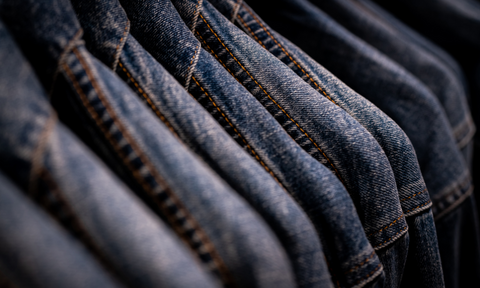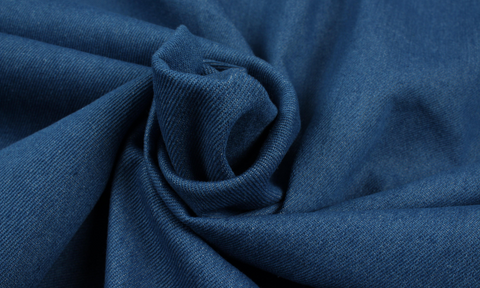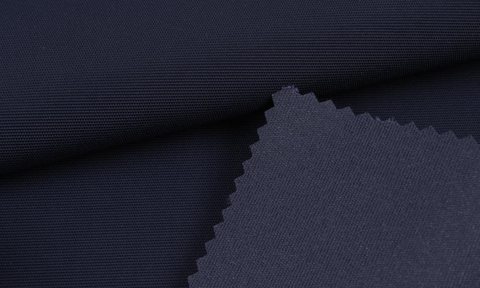When shopping for fabric, durability is a key factor, especially for items that endure heavy use, such as upholstery, outdoor gear, and workwear. At Hustle Tracks, we understand the importance of choosing the right fabric to ensure longevity and performance. In this blog, we explore the top three most durable fabrics, classified by weave type, and discuss their sustainable compositions, weights, and best uses.

1. Twill Weave: The Robust Classic
Twill weave is known for its diagonal rib pattern, created by weaving the weft thread over one or more warp threads and then under two or more warp threads. This structure not only makes twill fabrics strong but also resistant to wrinkles and stains.
Common Examples:
- Denim: Often used in jeans and workwear, denim is a heavy-duty fabric that withstands significant wear and tear.
- Gabardine: This tightly woven fabric is used in high-quality suits and uniforms due to its durability and smooth finish.
Sustainable Compositions:
- Organic Cotton Twill: Reduces the environmental impact by using less water and avoiding harmful pesticides.
- Recycled Polyester Twill: Offers a second life to plastic bottles, reducing waste and conserving resources.
Weight and Utility:
- Twill fabrics typically range from medium to heavy weight (200-475 g/m²).
- Ideal for clothing, upholstery, and bags, twill fabrics offer a perfect balance of strength and versatility.

2. Canvas Weave: The Ultimate Workhorse
Canvas weave is a plain weave but with a higher thread count, making it exceptionally strong and durable. This fabric is renowned for its ruggedness and is commonly used in outdoor and industrial applications.
Common Examples:
- Duck Canvas: A tightly woven, heavyweight fabric used in tents, shoes, and workwear.
- Sailcloth: Specifically designed for making sails, this fabric is known for its resistance to tearing and weather elements.
Sustainable Compositions:
- Hemp Canvas: An eco-friendly alternative that grows quickly with minimal water and no pesticides.
- Organic Cotton Canvas: Offers a durable option without the environmental costs of conventional cotton farming.
Weight and Utility:
- Canvas fabrics are heavy (340-680 g/m²), making them perfect for heavy-duty applications.
- Used in items that require exceptional strength, such as backpacks, tents, and jackets, canvas is a go-to fabric for durability.

3. Ripstop Weave: The Tear-Resistant Wonder
Ripstop weave is engineered to prevent tears and rips from spreading, making it one of the most resilient fabric structures. This is achieved by interweaving thicker reinforcement threads at regular intervals in a crosshatch pattern.
Common Examples:
- Nylon Ripstop: Widely used in outdoor gear like tents, jackets, and parachutes due to its lightweight yet strong properties.
- Polyester Ripstop: Known for its resistance to UV rays and abrasion, making it suitable for outdoor furniture and gear.
Sustainable Compositions:
- Recycled Nylon Ripstop: Made from reclaimed fishing nets and other nylon waste, offering a sustainable yet durable option.
- Bio-Based Polyester Ripstop: Derived from renewable sources, reducing dependency on fossil fuels.
Weight and Utility:
- Ripstop fabrics vary from lightweight to medium weight (70-240 g/m²).
- Ideal for outdoor and adventure gear, sportswear, and protective clothing, ripstop fabrics offer an excellent combination of lightness and strength.

